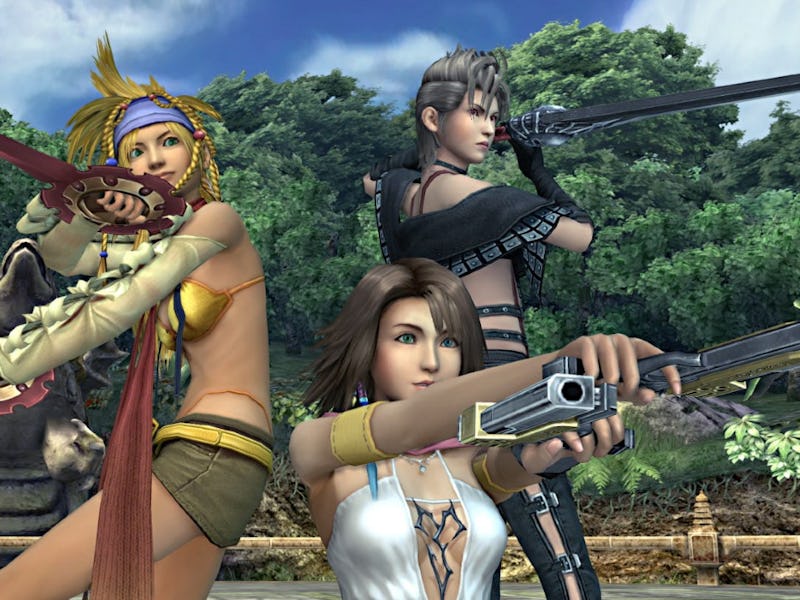20 Years Ago, Final Fantasy Broke Its Biggest Rule — and It Paid Off Wildly
Flight of the Gullwings.

You can jump into the Final Fantasy series anywhere, without any prior knowledge. The franchise has been built around each game being an entirely unique standalone experience. But in 2003, Square Enix shocked everyone by releasing a direct sequel to Final Fantasy X.
It was a new experience for fans, made all the more baffling by the utterly strange pop-concert opening sequence. Initially, Final Fantasy X-2 seemed like too drastic a shift to many fans of the series, but 20 years later the surprising sequel has aged incredibly well.
By this point, the pop song opening has become infamous, and it’s easy to see how it might have given fans whiplash in 2003. If you dig just beneath those flashy visuals, though, it thematically fits the world of Spira surprisingly well. The world of the previous game was dominated by religious fanaticism, gripped by fear at the ever-continuing wave of destruction brought by Sin. In that climate, there was no room for the people of Spira to engage in leisure activities or even think about creating their own art or culture in many ways. The central religion of Yevon dictated their lives, along with the need to constantly prepare and rebuild.
Yuna’s new look is also meant to represent her new journey of self-discovery, embracing the more flamboyant nature of Tidus.
In the second half of Final Fantasy X, players learn the teachings of Yevon have been completely fabricated, and the party eventually frees Spira from Sin’s destruction. However, that creates a giant vacuum in the life of the people of Spira. How do they live now? What do they do with their lives?
The concert at the beginning of Final Fantasy X-2 shows a world in the midst of a cultural renaissance, the people now finding new ways to live for not just survival, but enjoyment. That’s exactly why everything feels so indulgent because this is a culture discovering itself once again.
Interestingly, that’s also the theme of Final Fantasy X-2 at large, which is more Yuna’s story than anything. Just like Spira, Yuna had lived her entire life under the assumption that she’d be a summoner, forced to give up her life to ensure a future for the world. That’s why Yuna is such a naive spirit in Final Fantasy X, not sure how to “loosen up.” Tidus notably rubs off on her with his more laid-back nature, while she in turn has an effect on him.
With Spira saved and Tidus gone, Yuna’s completely unsure of what to do with her life. While X-2 is ostensibly a journey to find Tidus, it’s more a journey of self-discovery for Yuna as she figures out how she fits into this new world, without the duties of being a summoner.
From story to combat and minigames, Final Fantasy X-2 is intentionally supposed to feel drastically different from its predecessor.
Final Fantasy X-2 certainly has its fair share of problems with weird story moments and plotholes, but Yuna’s personal journey is absolutely a highlight. She’s broken free from an oppressive religious regime, and as a result, Final Fantasy X-2’s tone is much more light-hearted.
What makes Final Fantasy X-2 more impressive is how each facet of the game ties into this overall narrative context. The battle system is blazingly fast and uses a fantastic job system called Dresspheres, which help represent the energetic relationship between the main party.
Final Fantasy X’s linearity is also replaced by the ability to travel to any location at any time, and X-2 is loaded with optional side quests, minigames, and more. It’s integrally a different game that’s meant to evoke an entirely different feeling, but that fact gets to the heart of what makes Final Fantasy so special.
Square Enix wisely chose to do something innovative for its first true sequel. Final Fantasy X-2’s narrative themes and storytelling chops of the series’ first sequel don’t get the credit they deserve. If you haven’t played it before, check it out for yourself.
This article was originally published on